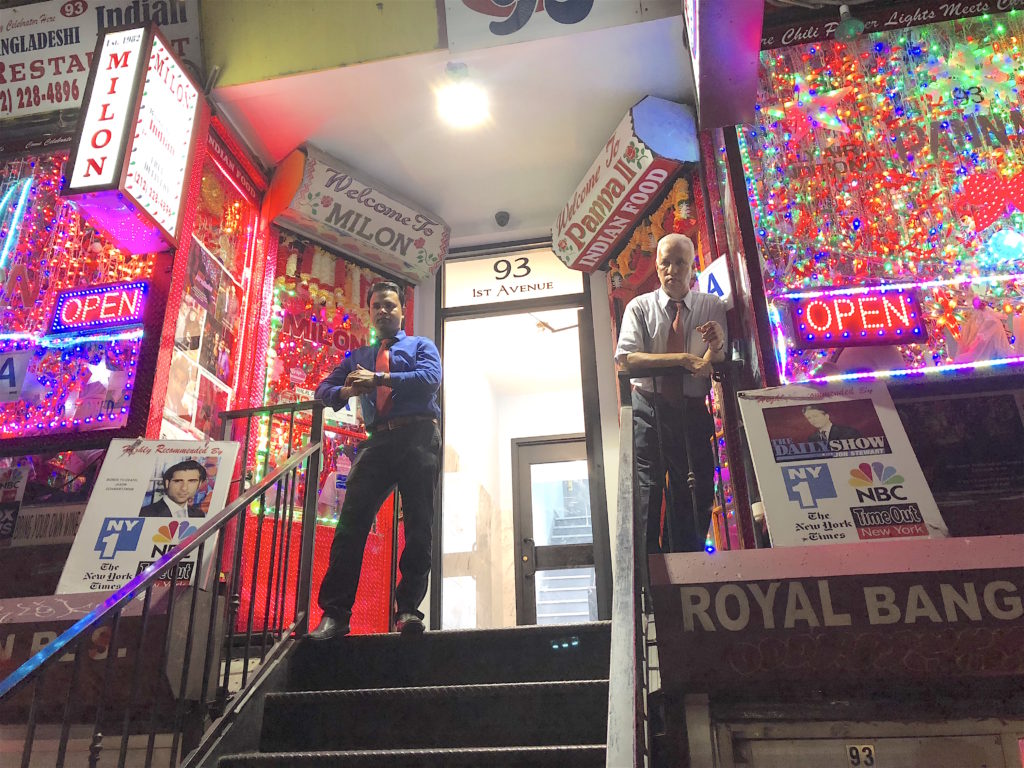Business
Indian Eateries Duel for Diners
By Amal Khateeb
Spectrum staff
The two men stood in front of the respective doorways of their side-by-side restaurants, beckoning diners.
“Come in, come in,” the first guy said, waving at people passing by.
“No, no, no, this is the one,” the other said, waving, too.
From the steps of the single stairway leading to Milon and Panna II, the side-by-side eating establishments, that kind of back-and-forth competition for customers goes on at various times of the business day.
Milon and Panna II, Bengali-owned restaurants on First Avenue that serve Indian food, are two of the few such restaurants left along a stretch of the East Village still known as Little India. Little India has shrunk. Rising rents and a flood of new residents who don’t necessarily prefer Indian food have reduced what used to be six blocks overflowing with Indian eat-in places to two blocks.
Now, the two restaurants have resorted to various means of trying to bring people in.
That competition played out, one summer day, like this:
An employee of Panna II trotted down two of the six steps on that shared stairway leading to the second-floor restaurants. He extended his hand and was just short of grabbing a passerby, who, nevertheless, kept going.
Seconds later, when an employee of Milon succeeded in attracting a diner, Panna II’s worker sighed. It was an exaggerated sigh, a clear sign of disappointment in that pedestrian’s choice of places to eat.
Milon opened in 1981, and Panna II in 1990. The owner of Panna II, Boshir Khan, said his was the first of the two restaurants to hang chili pepper-shaped red lights to help the place stand out. Khan calls Milon, which has the same decorative lights, a copycat. Milon’s owner, Shaheed Ahmed, dismisses that allegation.
“We put up lights first, but the other neighbors will say they did,” Ahmed said.
Panna II’s senior waiter, Juel Khan, 32, said his boss’ strung-up red lights are intended to be reminiscent of a decked-out, lit-up South Asian rickshaw. That, he believed, might make customer traffic pick up again.
“Lights make people happy,” Khan said, “so, they want to come here.”
By the time both restaurants were alight in red, Panna II began stationing an employee outside to keep diners from thinking the two restaurants were one and the same.
Some people think yelling out for customers isn’t a good look. “It’s not a good reputation,” said Shahir Ahmed, 40, a Milon waiter who is not fluent in English. “ But others call, so if we don’t call, we lose customers.”
A few factors may be affecting these and the other nine Indian restaurants in Little India, including a decline in people with South Asian roots who have tended to be the main clientele for these restaurants. The South Asian population in Manhattan fell from 243,341in 2008 to 229,663 in 2011, according to the Asian American Federation of New York.
It may not be good news for some that these restaurants have been closing and facing fiercer competition. But Milon waiter Shahir Ahmed, for one, enjoys it the fight. “Competition makes us better… “ he said. “We like the challenge.”


